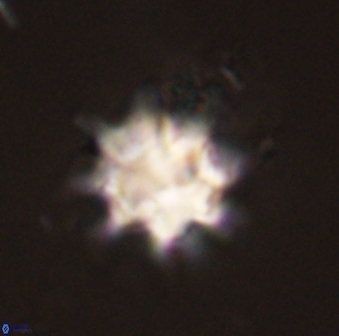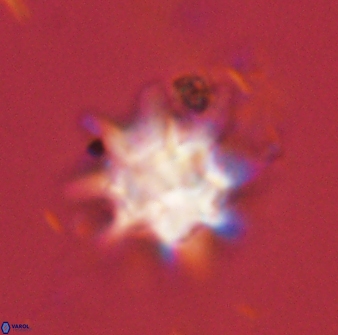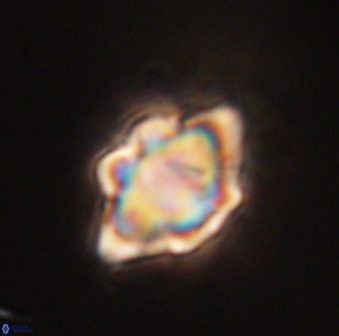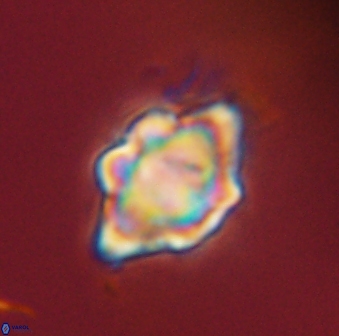Discoaster akinolgunii
Set number: 1798
-
1
-
2
-
3
-
4
-
5
-
6
-
7
-
8
-
9
-
10
-
11
-
12
-
13
-
14
-
15
-
16
-
17
-
18
-
19
-
20
-
21
-
22
-
23
-
24
-
25
-
26
-
27
-
28
-
29
-
30
-
31
-
32
10µm
Discoaster akinolgunii Varol, 2025a
The stellate species of Discoaster is characterised by a central area with prominent processes extending from both sides. Each specimen typically has about 7-10 straight segments. The segments are about half-free length and gently taper to a simple point.
Identifying the proximal or distal sides is challenging due to the species’ non-concave-convex nature. The proximal side resembles an extinct volcano displaying ridges extending from the proximal knob along the segments. The distal side is gently convex, adorned with a prominent distal process, and features sutural ridges extending to the inter-segment area from the distal process.
In honour of journalist and author Akin Olgun, London, United Kingdom.
Maximum diameter = 9.0 μm; Diameter of central area = 6.0 μm; Free length of segments = 3.0 μm; Maximum thickness: 6.0 μm; Height of distal process = 1.0 μm; Height of proximal process = 1.0 μm; Diameter of proximal knob = 4.0 μm; Diameter of distal process = 4.0 μm.
Optical Properties: The optical properties of Discoaster akinolgunii, including constant extinction (dim) in the plan view and interference colours due to birefringence in the side view under XPL, align with those observed in the genus Discoaster. The species displays first-order yellow to second-order blue interference colours in the side-view examination.
Discoaster akinolgunii differs from Discoaster mahmoudii by having a thicker central area and 7-10 segments with shorter free lengths. In contrast, Discoaster mahmoudii has a thinner central area with 5-6 segments with longer free lengths.
Varol, O. 2025a. A practical guide to optical studies of calcareous nannofossils. Grzybowski Foundation Special Publication. 29: 1-222



